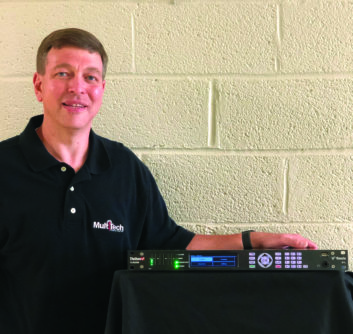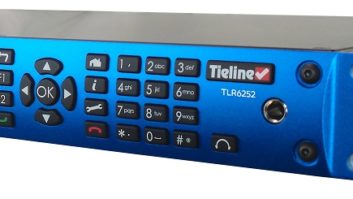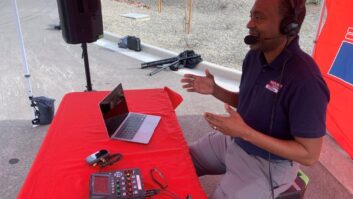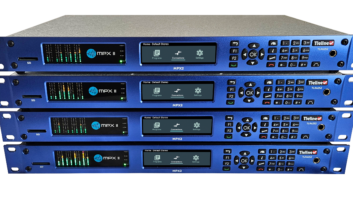 SWANNANOA, N.C. — I started in radio in an on-air capacity while pursuing an engineering degree and, while still in college, transitioned to a station engineering position. In the years following, I served at several facilities in roles from maintenance engineer to director of engineering. Since 2001, I have operated MultiTech Consulting, offering a full range of services tailored to the broadcast and information technology industries, including facility and system design, installation/integration and equipment performance verification/measurement.
SWANNANOA, N.C. — I started in radio in an on-air capacity while pursuing an engineering degree and, while still in college, transitioned to a station engineering position. In the years following, I served at several facilities in roles from maintenance engineer to director of engineering. Since 2001, I have operated MultiTech Consulting, offering a full range of services tailored to the broadcast and information technology industries, including facility and system design, installation/integration and equipment performance verification/measurement.
We have clients throughout the U.S., and some of the networks I have consulted with include Relevant Radio, VCY Networks, Salem Communications, and ABC television O&Os to name just a few.
I have followed the progression of Tieline ever since they advertised the original Commander in Radio World 15 or more years ago. Since that time, I have installed a range of Tieline codecs including Genie STL, Merlin, Merlin Plus, Bridge-IT, Bridge-IT XTRA, Commander G3 Studio and Field, and i-Mix G3. Primarily, the codecs have been used as STLs, but also for remote contribution.
We recommend Genie STL codecs to customers because of the range of features and built-in redundancy options. Key features that are significant factors in our recommending the product include configurability, the IP distribution options, and backup features like SmartStream Plus, ISDN and POTS. That, coupled with the customer support Tieline has always provided, makes the selection easy.
Our typical configuration is a single-IP stream, either unidirectional or bidirectional, as well as multiple peer-to-peer IP streams, or several multi-unicast streams. We have also configured multicast connections for clients.
REDUNDANCY STRATEGIES
So long as properly engineered networks are implemented, we have found IP connections to be extremely reliable. Redundancy requirements vary from client to client, but are largely fulfilled by the built-in redundancy afforded in the Genie: redundant power supplies, SmartStream Plus redundant streaming, and failover to a backup connection, etc.
Larger clients may implement an N+1 configuration to ensure complete redundancy and utilize the Genie’s built-in PSU failure, temperature and connection loss alarms, or more elaborate external silence detection and network traffic monitoring. We have also started to utilize SNMP traps for SNMP monitoring.
Our clients utilize everything from DSL to point-to-point fiber, or microwave IP transport. It is dependent upon location and availability. The most popular options are cable modem for general use and metropolitan area Ethernet networks for our “hardcore” clients. Noticeably, a growing number of studio and transmitter sites are unable to be linked via traditional RF point-to-point methods, or face the ongoing sunsetting of the ISDN and T1 infrastructure. As more and more “real-time” traffic is carried by IP networks, I believe QOS and dynamic bandwidth allocation will require more planning and attention.
We frequently utilize MPEG 2 encoding for its transcode and cascade resilience. Where bandwidth allows, such as with metro Ethernet circuits, we use uncompressed audio. For field work/remote broadcasts, etc., we find AAC and Tieline Music/Music Plus algorithms work well.
Contribution and STL encoding bitrates are usually at 256 kbps or greater, and remote broadcasts at 64, 96 or 128 kbps. With cellular connections we used to employ 32 or 48 kbps, but with the cost of bandwidth almost constantly decreasing and the reliability of mobile networks increasing, we rarely, if ever, still connect at those bitrates.
[Tieline Puts Excitement in Small-Market Stations]
As clients have transitioned to IP operations, most have adapted to the slight amount of latency that is inherent within the digital environment. Where latency is critical, such as with IFB or comms channels, choosing an appropriate low-delay algorithm like AAC-LD or G.722 is key.
We use a mix of auto and fixed jitter buffering based upon the application; however, we find for most situations auto works quite well. FEC is also a valuable tool for mitigating packet loss.
The Toolbox web GUI interface has always been straightforward and easy to work with and the transition to the HTML 5 interface has made remote configuration and control from virtually any browser even easier.
We recommend clients take full advantage of the built-in security options, have a schedule for password changes and make use of a firewall. The ability to implement SSL security certificate connections is a great addition to the feature set and in many cases removes the need for a VPN connection to securely administrate the codec.
For point-to-point connections, we recommend limiting, via a firewall, the IP addresses that can connect to the codecs. In all situations, we advise they open only the necessary ports, maintain and review logs of connections and connection attempts, and implement firewall monitoring that generates alarms for excessive traffic on administrative addresses/ports.
Clients who use the Genie for STLs often compare it to their former RF-based systems. We most often hear: “Just like the old system — we set it up and forgot about it. It just works.” That level of reliability allows them to focus on other day-to-day tasks without worrying about the STL.
For information, contact Dawn Shewmaker at Tieline in Indiana at 1-317-845-8000 or visit www.tieline.com.










